It turns out that some forms are more effective than others at capturing not just more leads, but higher-quality leads. So, in this guide, I’ve compiled the most up-to-date expert advice on lead generation form best practices. (And if you want to take a step back and think through your strategy first, this free lead generation starter guide can help.)
What is a lead generation form?
Lead forms, or lead generation forms, gather information from potential customers in exchange for an offer or a piece of content such as an ebook, case study, research report, or webinar.
Often, these forms are delivered through a landing page, but you might embed them directly into your website content as well.
Personally, I’ve seen greater success from lead forms that were directly embedded into my web pages than from those that required an extra click to access the landing page. But this can depend on your audience and on your offer. When in doubt, try testing both to see which placement performs better for you.
In any case, once a website visitor fills out the lead form with their information, they are able to access your offering. The key is to ensure prospects see a clear value in the resources you offer so they will be compelled to trade their personal information for access.
This means you need to offer something your prospects will value, but it also means you need to clearly communicate that value to them.
That’s where lead form best practices come in.
An effective lead generation form communicates your value proposition in a way that entices prospects to sign up.

7 Lead Generation Form Best Practices
As with most marketing strategies, finding just the right structure for your lead forms will take some trial and error to get the results you want. But these six lead generation form best practices will give you a solid foundation to build on.
1. Choose the right placement.
Before I get into what to include in your lead generation form, let’s talk about where to place the form itself.
Generally, you’ll want to keep your form above the fold. This means placing it at the top of the page so it’s prevalent and easy to spot without scrolling. However, this isn’t the only position to consider for your lead form placement.
Here are four potential placements for you to test.
Beside the Landing Page Offer
Placing your lead generation form above the fold doesn’t necessarily mean it has to be the only thing visitors see when they first land on the page. Instead, try placing the form and copy introducing your offer side-by-side.
For example, take a look at the landing page below. The lead form is above the fold, but it’s not the most eye-catching element on the page — the content is.
Putting the form beside the landing page copy reminds users of the valuable resource they’ll receive if they submit their basic information.
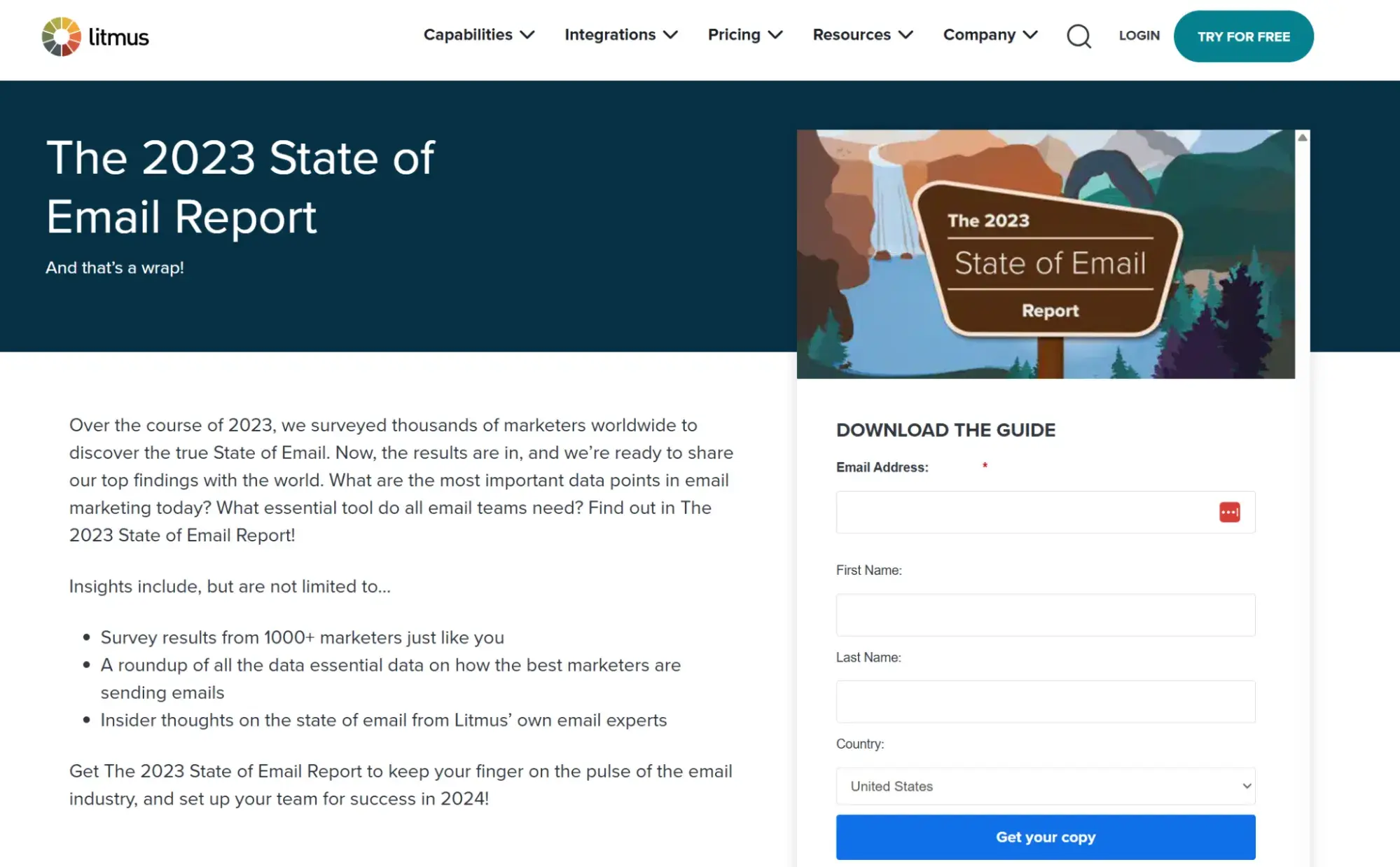
Throughout the Landing Page or Website Content
If you have a lengthy landing page or are embedding your lead form into website content such as a blog post, you’ll want to include the lead form in at least three positions — or after every 350 words — throughout the page.
Take this report for example. It contains over 1,000 words of content, with the lead form in five different locations as you scroll down the page.
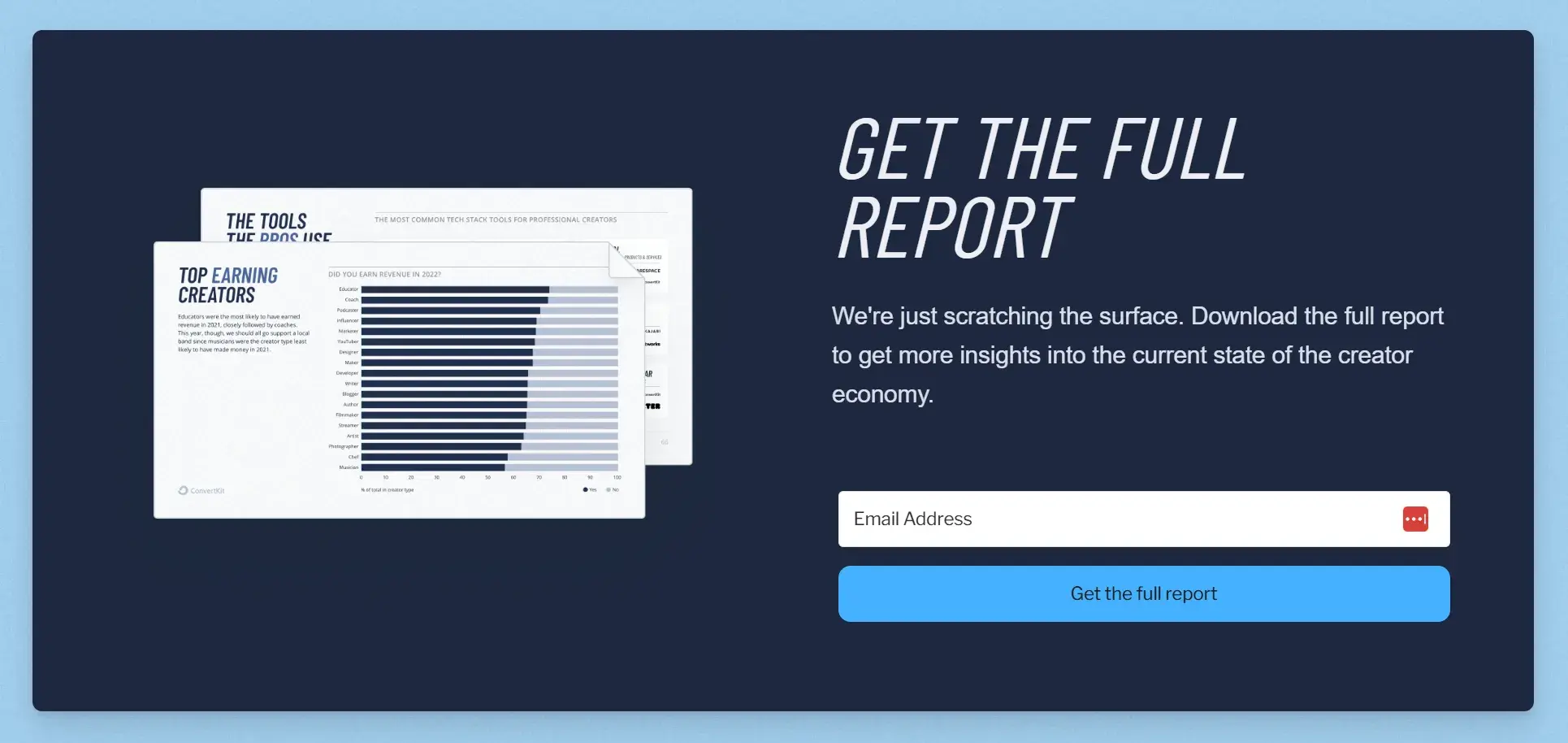
This accomplishes several purposes:
- It prevents the prospect from forgetting about your offer as they digest the content.
- It makes it easy for the prospect to fill out the form, since they don’t need to scroll back up and find it again after reading.
- It repeatedly prompts the prospect to fill out the form so they can access your offer, giving them more chances to say yes.
Regardless of how long your landing page is, make sure to include the lead form one final time at the bottom of the page. This position allows your content to take center stage so visitors have one more chance to determine if it's worth downloading.
For a more streamlined look, you could even replace some of the embedded lead forms with buttons that automatically scroll down to that final lead form at the bottom of the page.
In a Chatbot
Besides using chatbots to automate responses and communicate with your visitors, you can use them to share your lead generation form. For instance, when you click “Get full report” on the landing page below, the form pops up, requesting your email to “Download the Full Report.”
Using a chatbot to share your form is an unobtrusive way to keep your offer in visitors’ line of sight no matter how far down the page they scroll.
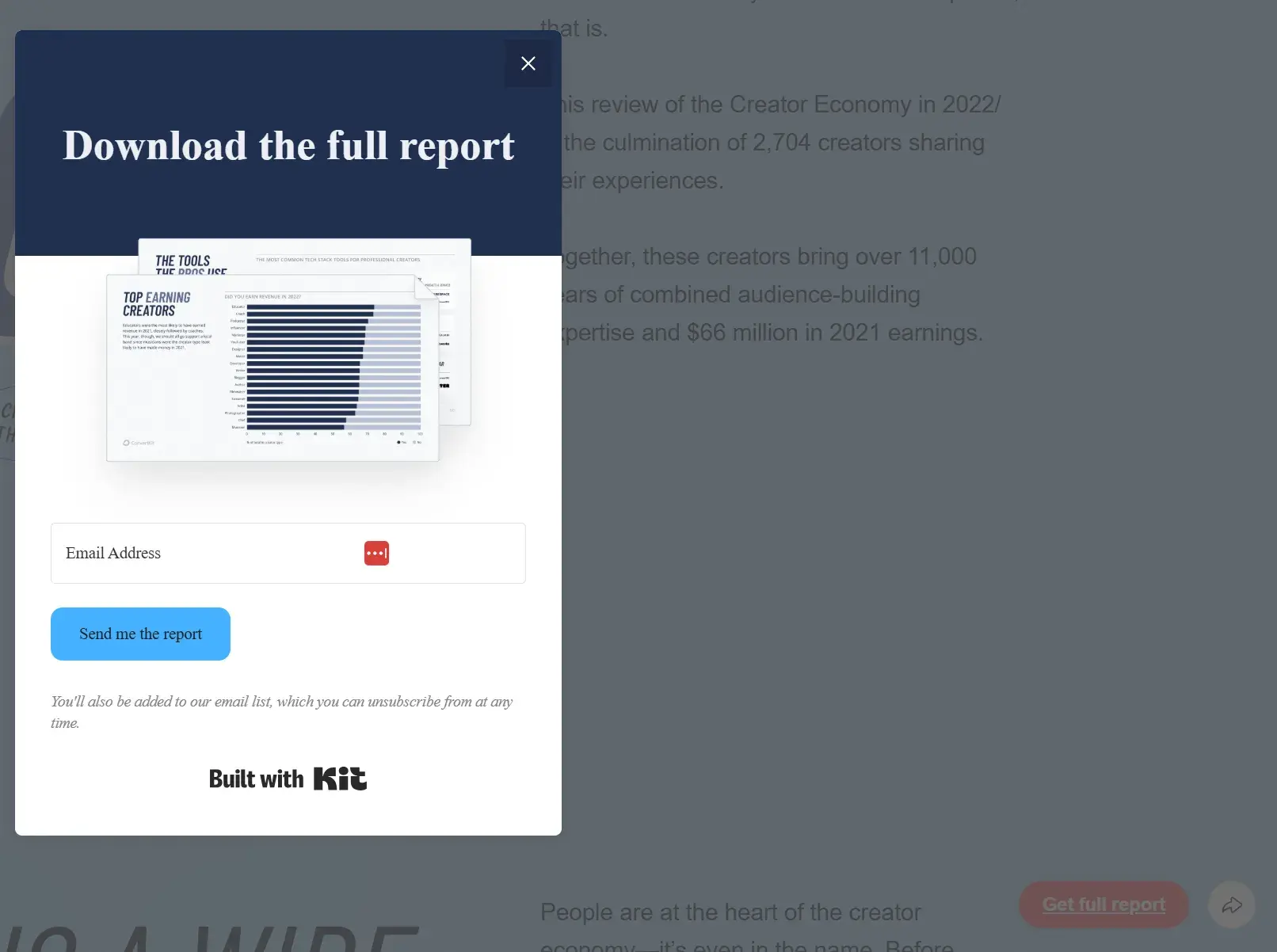
2. Determine the right length for your lead form.
The next — and probably biggest — concern when designing your forms is the length. In other words, how much information should you ask for?
I asked this question of several marketing experts, and their consensus was: it depends.
While ideally, you want to keep your lead forms as simple as possible, the exact number of form fields you should include will vary based on whether you’re aiming for quantity or quality of leads — and what sort of resource you’re offering in exchange for their information.
Shorter forms are great for generating more leads since people can fill them out quickly.
Longer forms, on the other hand, require prospects to provide more details about themselves and their needs, meaning they show a better purchasing intent. So you may get fewer leads, but they’ll be of better quality.

Arham Khan, founder and CEO of Pixated, recommends tailoring your lead forms to the stages of the buyer’s journey:
- For prospects in the early awareness stage, only ask for their name and email so you can keep in contact.
- For serious buyers considering their options, add specific qualifying questions to help filter out lower-quality leads.
- Likewise, for high-ticket deals, add a few more strategic qualifying questions to filter out all but the most qualified leads.
“For a B2B software client,” Khan says as an example, “we added a simple ‘Company Size’ drop-down. Lead volume decreased by 22%, but qualified prospects jumped 37%. Their sales team celebrated the change.”
That said, even high-intent prospects may click away if they see a long, complicated lead generation form. To avoid this, many of the experts I spoke with advised using a progressive lead form that includes steps and a progress bar like the one pictured below.
This gives visitors an idea of how quickly they can complete the form and download the resource.
3. Personalize the form.
A great way to qualify the leads from your lead generation form is to personalize the form fields to your target audience using dynamic form fields.
Dynamic form fields use dependencies to show visitors different questions based on their previous answers. For example, if you work with clients in different industries, you might first have them select their industry from a drop-down list. Then, the form would ask for industry-specific information to help you determine which services they need.
Some dynamic forms can also change depending on the visitor’s previous interactions with your website. For example, it might automatically populate certain fields with information the user has entered on other pages of the site or ask specific questions related to information on pages they’ve previously viewed.
Callum Gracie has used this tactic on the website for his digital marketing agency, Otto Media.
“If someone visits a client’s pricing page multiple times but hasn’t signed up, our form doesn’t just ask for their email, it includes a question like, ‘What’s stopping you from signing up?’ with multiple-choice options,” he explains.
“If they select ‘Need more details on ROI,’ we send them a case study instead of a generic sales email. When we applied this tactic to an e-learning client, conversions increased by 39% because leads felt like we were addressing their specific concerns, not just pushing them into a sales funnel.”
4. Offer low-commitment options.
Not everyone who views your form will fill it out. But that doesn’t mean you have to let potential leads slip away just because they aren’t quite ready to give you all of their information. Many of the experts I consulted recommended adding a few low-commitment actions that interested visitors can take.
- Follow up on incomplete forms. If visitors provide their email but abandon the form midway through, send a quick follow-up email to ask if they’re still interested in your offer and link them back to the form.
- Let them save it for later. Sometimes, people can’t fill out the form in one sitting. Using a form that saves their information and prefills it on their next visit can help encourage them to come back and finish later. Likewise, letting visitors email the form to themselves can help reduce the chances of them forgetting about it.
- Use buttons instead of free-text fields. When possible, replace free-text fields in your form with buttons or drop-down selections. Not only does this reduce friction for visitors to complete your form, but it will also make it easier for you to categorize your leads based on their responses.
- Offer an alternative. If your form is targeted at serious buyers, visitors who aren’t ready to buy will end up leaving the page. However, you can still capture some of those top-of-funnel leads with an alternative offer. Create an exit intent popup with a simple offer — like a free download or newsletter content — in exchange for just their name and email.
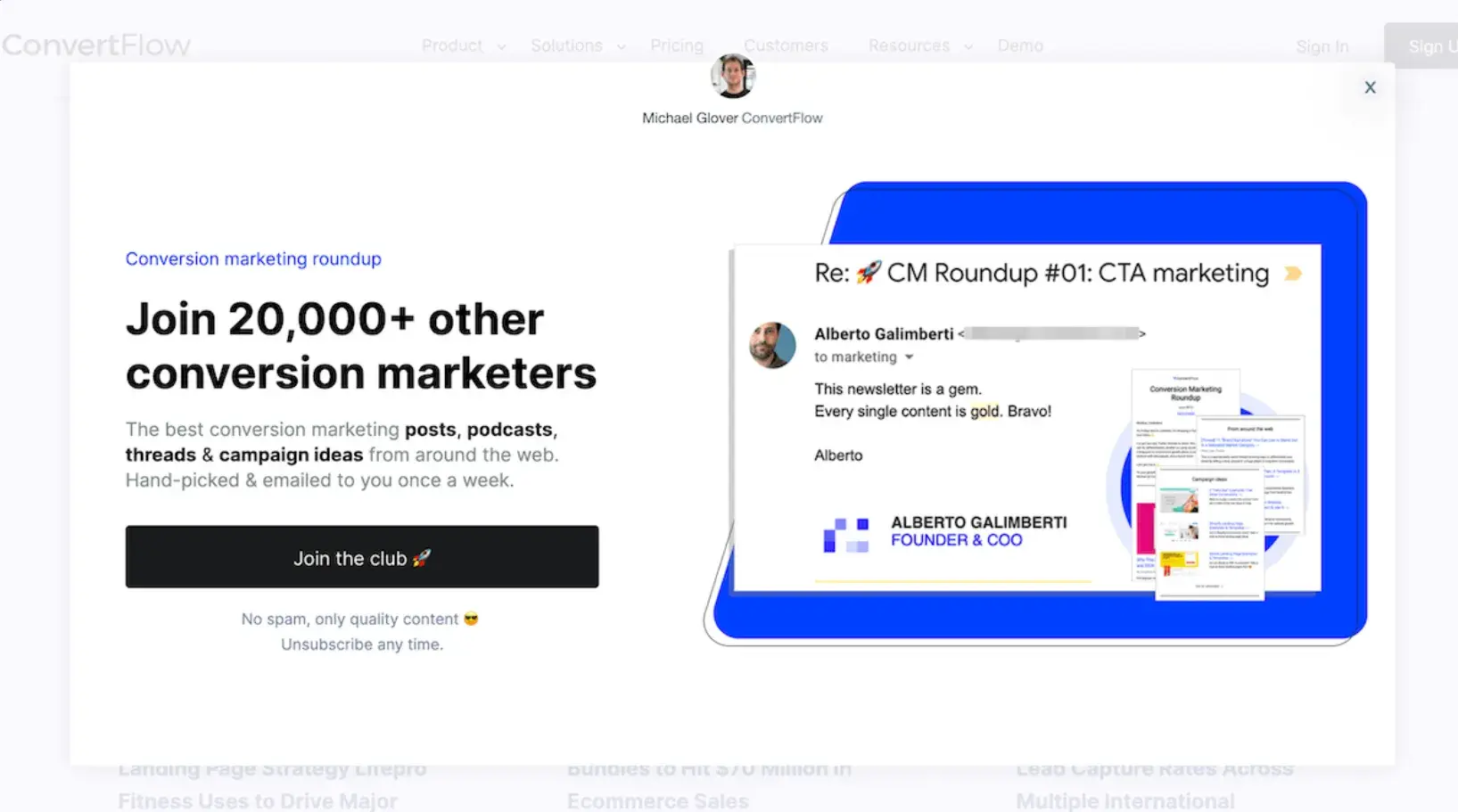
5. Include your privacy policy.
More than 80 countries, including the United States, Canada, Australia, Argentina, and members of the European Union, have privacy and data collection laws. Often, these laws require you to include a privacy policy when collecting personally identifiable information (PII).
PII covers both sensitive information, like a visitor’s full name and email address, and non-sensitive information, like their zip code, race, date of birth, etc.
Irrespective of a form’s location on your website, you should place your privacy policy where it’s easily noticeable. This puts prospects at ease if they are skeptical about sharing their information.
For example, our lead forms show a privacy policy preview right above the download button. Visitors who want to know more about how their information may be used or stored can click the link to read the full privacy policy before signing up.
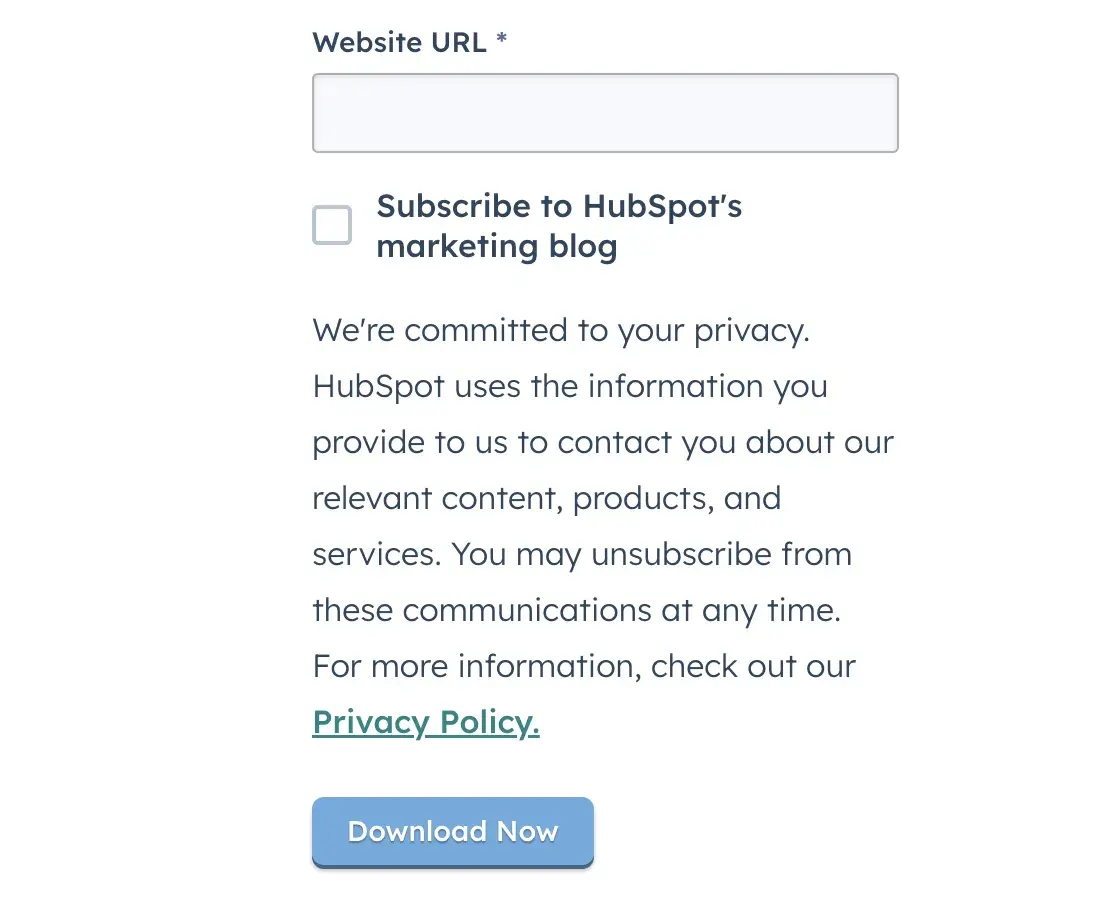
Finally, consider placing client testimonials, authority endorsements, third-party security certifications, or a guarantee seal beside your privacy policy. These can help alleviate any remaining concerns for visitors who may hesitate to fill out your form.
6. Change the submission text and button appearance.
The submission button is a major component of your lead form, so how it looks should never be an afterthought. If you’re using the default text “submit” for this button, you may be losing out on leads.
Overwhelmingly, the majority of experts I spoke to reported a jump in conversion rates after changing the submission text to something more conversational and relevant to the offer or brand.
For example, Kate Ross, a marketing professional for beauty brand Irresistible Me, has seen great success with on-brand, friendly language like “Hey, want first dibs on new styles?” instead of the generic “Submit your info.”
Depending on your offer, other alternatives to “Submit” could include “Download now,” “Get the free guide,” or even “Sign me up!”
But the text isn’t the only component of the submission button you should consider changing. Ross tested two color options for her lead form’s buttons — red and teal, in her case — and found that teal outperformed red by as much as 15%.
Since such a small change can make a huge difference in conversion rates, I recommend running A/B tests to determine which designs and wording perform best for you.
However, when testing your form, only test one element at a time.
For instance, if you’re testing the color, shape, or size of the submission button, don’t simultaneously test the form length. That way, when one variation of the form brings in more leads, you’ll know exactly which element made the difference.
7. Bonus: Don’t forget the success message.
Whether people are applying for a role in a company, downloading a free resource, or contacting you about your services, they want a response once they hit your submit button. Otherwise, they’re left wondering if the submission succeeded.
This is where autoresponders come in handy. Many form builders have this functionality, so take advantage of it. Besides providing an excellent experience, having an autoresponder in place helps you begin your relationship with prospects on the right foot.
Additionally, I’ve found it helpful to change the form submission success message so that it prompts users to check their email inbox and spam folder for the confirmation email. After all, the last thing you want is someone thinking you failed to deliver the promised resource just because it landed in spam.
Building Better Lead Forms
As my own experience creating lead generation forms has taught me, how a lead form looks and where it’s located matter just as much as the value you’re offering in exchange for prospects’ information.
But my biggest takeaway from the above best practices is that there is no perfect formula for an effective lead form.
Instead, when building your form, start with who you’re targeting and what kind of incentive you’re providing them. Tailor the form’s design and fields accordingly, and then test and tweak it until you achieve your desired results.
Editor's note: This post was originally published in November 2011 and has been updated for comprehensiveness.
Forms











